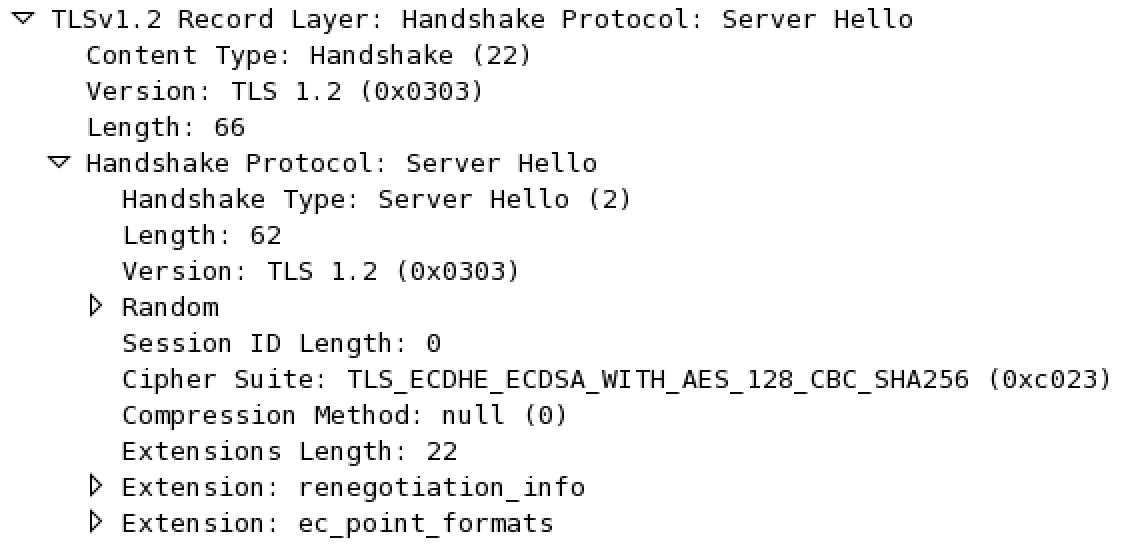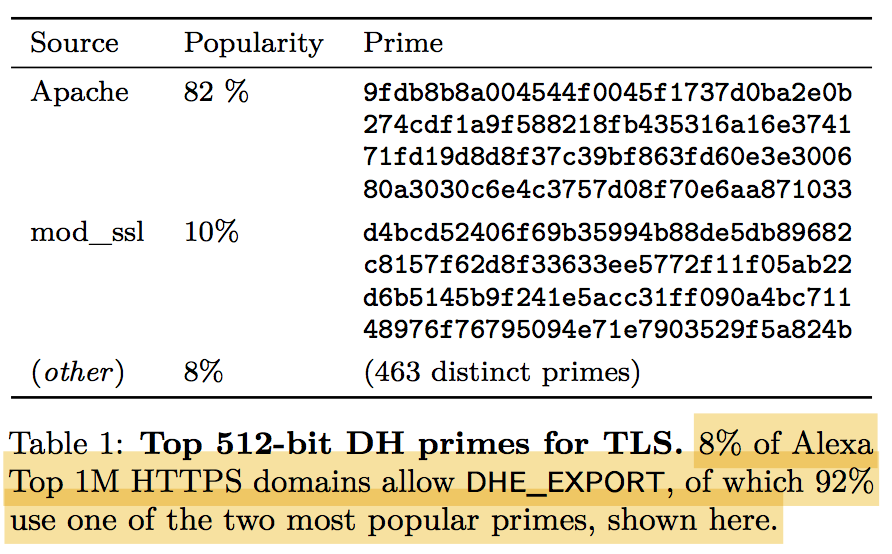I've been posting some more links to the links section:
DJB being DJB


The funny tale of a dude who wants to safely ssh to his server on his brand new windows laptop. This follows by how to safely download, execute and use PuttY... and it's hilarious.

An awesome article written by Filippo that complements mine quite well. I don't know who made this logo but it rocks!
A timeline of famous hacks, leaks, etc... If you are curious
A whitehouse blogpost by Ed Felten on cooperative strategy, a nice counter-intuitive puzzle that I will not forget!
Alice and Bob are playing a game. They are teammates, so they will win or lose together. Before the game starts, they can talk to each other and agree on a strategy.
When the game starts, Alice and Bob go into separate soundproof rooms – they cannot communicate with each other in any way. They each flip a coin and note whether it came up Heads or Tails. (No funny business allowed – it has to be an honest coin flip and they have to tell the truth later about how it came out.) Now Alice writes down a guess as to the result of Bob’s coin flip; and Bob likewise writes down a guess as to Alice’s flip.
If either or both of the written-down guesses turns out to be correct, then Alice and Bob both win as a team. But if both written-down guesses are wrong, then they both lose.
Okay that one seems kind of useless. But if someone wants to tell me otherwise I'm all ears! But this seems more like a stunt to introduce their new cloud service:
One of the main motivations for adding cryptographic functionality to the Wolfram Language was the arrival of the Wolfram Cloud.
If you haven't heard, some people from (or not) Lulzsec have found some serious vulns on the Hola! Plugin. And also they are not happy. Personally I find this Hola! really useful as a free solution to get a netflix US account when not in the US and being able to watch youtube (because everything is "blocked in your country" when you are not in the US). And the fact that you are basically a TOR node is also nice, it increases global anonymity! But that's just my opinion.
Play with elliptic curves!
MOAR?
You can find more on the links section. You can also suggest me links there =)
Since it is now common custom to market a new vulnerability, here is the page: weakdh.org you will notice their lazyness in the non-use of a vulnerability logo.
The paper containing most information is here:
Imperfect Forward Secrecy: How Diffie-Hellman Fails in Practice, from a impressive amounts of experts (David Adrian, Karthikeyan Bhargavan, Zakir Durumeric,
Pierrick Gaudry, Matthew Green, J. Alex Halderman, Nadia Heninger, Drew Springall, Emmanuel Thomé, Luke Valenta, Benjamin VanderSloot, Eric Wustrow, Santiago Zanella-Béguelin, Paul Zimmermann)
Not an implementation bug, flaw lives in the TLS protocol
This is not an implementation bug. This is a direct flaw of the TLS protocol.
This is also a Man in The Middle attack. By being in the middle, the attacker can modify the ClientHello packet to force the server to use an Export Ciphersuite, i.e. Export Ephemeral Diffie-Hellman, that uses weak parameters. I already explained what is an "Export" ciphersuite when the FREAK attack happened.
The server then generates weak parameters for a public key and sends 4 messages:
- ServerHello that specifies the Ciphersuite chosen from the list the Client gave him (if the attacker did things correctly, the server must have chosen an Export ciphersuite)
- Certificate which is the server's certificate
- ServerKeyExchange which contains the weak parameters and his public key.
- ServerHelloDone which signals the end of his transmission.
The ServerKeyExchange message is here because an "ephemeral" ciphersuite is used. So the Server and the Client need extra messages to compute an "ephemeral" key together. Using an Export DHE (Ephemeral Diffie-Hellman) or a normal DHE do not change the structure of the ServerKeyExchange message. And that's one of the problem since the server only signs this part with his long term public key.

Here you can see the four messages in Wireshark, the signature is computed on the Client.Random, the Server.Random and the ECDH parameters contained in the ServerKeyExchange.
Thus, the attacker only has to modify the unsigned part of the ServerHello message to tell the Client his normal ciphersuite has been chosen (and not an Export ciphersuite).

Now all the attacker has to do is to crack the private key of either the Client or the Server. Which is easy nowadays because of the low 512bits security of the Export DHE ciphersuite.
It can then pass as the server and read any messages the client wants to send to the server

(taken from the paper)
Not an implementation bug, but implementations do help
the use of common DHE parameters is making things easier for attackers since they can do a pre-computation phase and use it to quickly crack a private key of a weak DHE parameters during the handshake.
This happens, for example when Apache hardcoded a prime for its Export DHE Ciphersuite that is now used in a bunch of servers

(taken from the paper)
Defense from the Server
Don't use common DH or DHE parameters! Generate your owns. But even more important, remove the Export Ciphersuites as soon as possible.
Defense from the Client
From a client perspective, the only defense is to reject small primes in DHE handshakes.
This is the only way of detecting this Man in The Middle attack.
You could also remove DHE in your ciphersuite list and try to use the elliptic curve equivalent ECDHE (Elliptic Curve Diffie-Hellman Ephemeral)
Another way: if you control both the server and the client, you could modify both ends so that the server signs the ciphersuite he chose, and the client verifies that as well.
1024 bits primes?
In the 1024-bit case, we estimate that such computations are plausible given nation-state resources, and a close reading of published NSA leaks shows that the agency’s attacks on VPNs are consistent with having achieved such a break. We conclude that moving to stronger key exchange methods should be a priority for the Internet community.
Seems like the NSA doesn't even need to downgrade you. So as a server, or as a client, you should refuse primes <= 1024bits
Where is TLS used?
TLS is not only used in https!
For example, what about EAP, i.e. wifi authentication? From a quick glance it looks like there are no export ciphersuite.
But weak DH and DHE parameters should be checked as well everywhere you make use of Discrete Logarithm crypto
The Plaid Parliament of Pwning, a security team at Carnegie Mellon University is organizing a CTF right now until tomorrow: http://play.plaidctf.com/
There are two crypto challenges at the moment, and maybe more if someone unlocks one. Have fun!
An interesting question on security.stackexchange
If two wifi have the same name, and you know one is there for a man in the middle attack, then how can you guess which one it is?
There are a lot of interesting answers, like triangulating the signal to see which one is your modem, or checking the MAC address...
So there is this app that encrypts your data on your mobile, in case it ends up in the wrong hands. Sounds good. And then there is this guy who took a look at it and figured out the data was just XORed with a 128bit keys consisting of only 4s. If the data is longer than 128bits? Let's not encrypt it!
I don't know how legit it is, especially considering how easy it is to just write aes(something) but here you go








